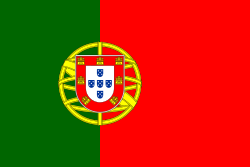Schweiz Grand Prix
| Bremgarten | |
 | |
|---|---|
| Formel 1 | |
| Banlängd | |
| 1950-1954 | 7,280 km |
| Banrekord | |
| 1950-1954 | 2:39,7 Juan Manuel Fangio, Mercedes-Benz, 1954 |
Schweiz Grand Prix var en deltävling i formel 1-VM som kördes i Bremgarten nordväst om Bern i Schweiz.
Schweiz Grand Prix kördes första gången 1934. Loppet blev en deltävling i VM 1950. 1955 förbjöds racertävlingar i Schweiz[1] av myndigheterna på grund av en mycket allvarlig krasch i Le Mans 24-timmars samma år. Senare schweiziska grand prix har körts i Dijon i Frankrike.
Vinnare Schweiz Grand Prix
Ljusröd bakgrund betyder att loppet inte ingick i formel 1-VM.
Ljusgul bakgrund betyder att loppet ingick i Europamästerskapet för Grand Prix-förare.
| År | Bana | Förare | Konstruktör |
|---|---|---|---|
| 1982 | Dijon-Prenois | Williams-Ford | |
| 1981 - 1976 | Inga tävlingar | ||
| 1975 | Dijon-Prenois | Ferrari | |
| 1974 - 1955 | Inga tävlingar | ||
| 1954 | Bremgarten | Mercedes-Benz | |
| 1953 | Bremgarten | Ferrari | |
| 1952 | Bremgarten | Ferrari | |
| 1951 | Bremgarten | Alfa Romeo | |
| 1950 | Bremgarten | Alfa Romeo | |
| 1949 | Bremgarten | Ferrari | |
| 1948 | Bremgarten | Alfa Romeo | |
| 1947 | Bremgarten | Alfa Romeo | |
| 1946 - 1940 | Inga tävlingar | ||
| 1939 | Bremgarten | Mercedes-Benz | |
| 1938 | Bremgarten | Mercedes-Benz | |
| 1937 | Bremgarten | Mercedes-Benz | |
| 1936 | Bremgarten | Auto Union | |
| 1935 | Bremgarten | Mercedes-Benz | |
| 1934 | Bremgarten | Auto Union | |
Referenser
Noter
| ||||||||
Media som används på denna webbplats
The civil ensign and flag of Belgium. It is identical to Image:Flag of Belgium.svg except that it has a 2:3 ratio, instead of 13:15.
The Flag of Europe is the flag and emblem of the European Union (EU) and Council of Europe (CoE). It consists of a circle of 12 golden (yellow) stars on a blue background. It was created in 1955 by the CoE and adopted by the EU, then the European Communities, in the 1980s.
The CoE and EU are distinct in membership and nature. The CoE is a 47-member international organisation dealing with human rights and rule of law, while the EU is a quasi-federal union of 27 states focused on economic integration and political cooperation. Today, the flag is mostly associated with the latter.
It was the intention of the CoE that the flag should come to represent Europe as a whole, and since its adoption the membership of the CoE covers nearly the entire continent. This is why the EU adopted the same flag. The flag has been used to represent Europe in sporting events and as a pro-democracy banner outside the Union.Flag of Portugal, created by Columbano Bordalo Pinheiro (1857–1929), officially adopted by Portuguese government in June 30th 1911 (in use since about November 1910). Color shades matching the RGB values officially reccomended here. (PMS values should be used for direct ink or textile; CMYK for 4-color offset printing on paper; this is an image for screen display, RGB should be used.)
Flag of South Africa, used between 1928 and 1982. It is identical to the 1982 to 1994 version except that the shade of blue is darker. It is also known as the "Oranje-Blanje-Blou".
Flag of the State of Nevada. The flag is described in Nevada Revised Statutes Chapter 235, Sec. 20 as follows: The body of the flag must be of solid cobalt blue. On the field in the upper left quarter thereof must be two sprays of Sagebrush with the stems crossed at the bottom to form a half wreath. Within the sprays must be a five-pointed silver star with one point up. The word “Nevada” must also be inscribed below the star and above the sprays, in a semicircular pattern with the letters spaced apart in equal increments, in the same style of letters as the words “Battle Born.” Above the wreath, and touching the tips thereof, must be a scroll bearing the words “Battle Born.” The scroll and the word “Nevada” must be golden-yellow. The lettering on the scroll must be black-colored sans serif gothic capital letters.
National flag and merchant ensign of Germany from 1933 to 1935.











































